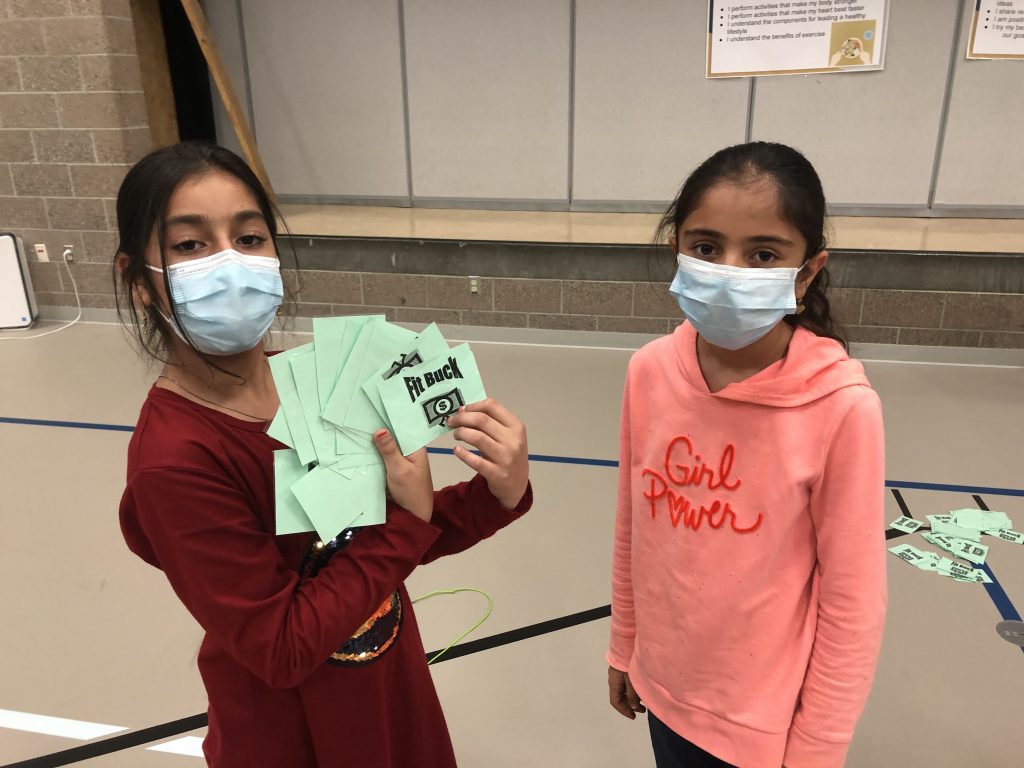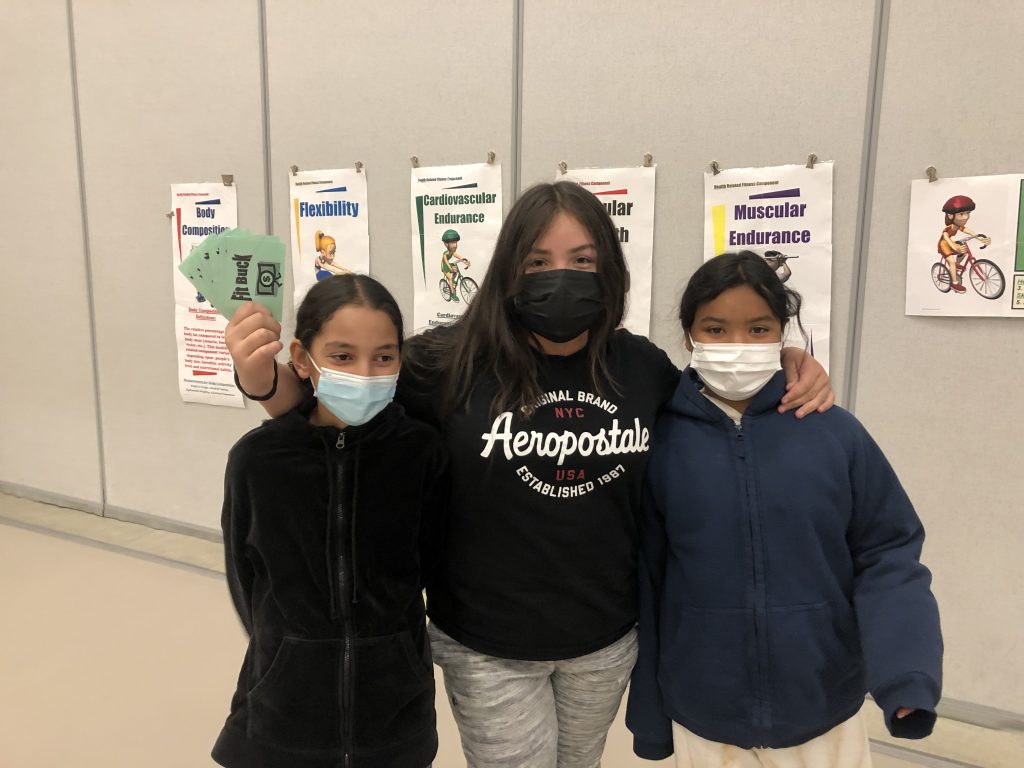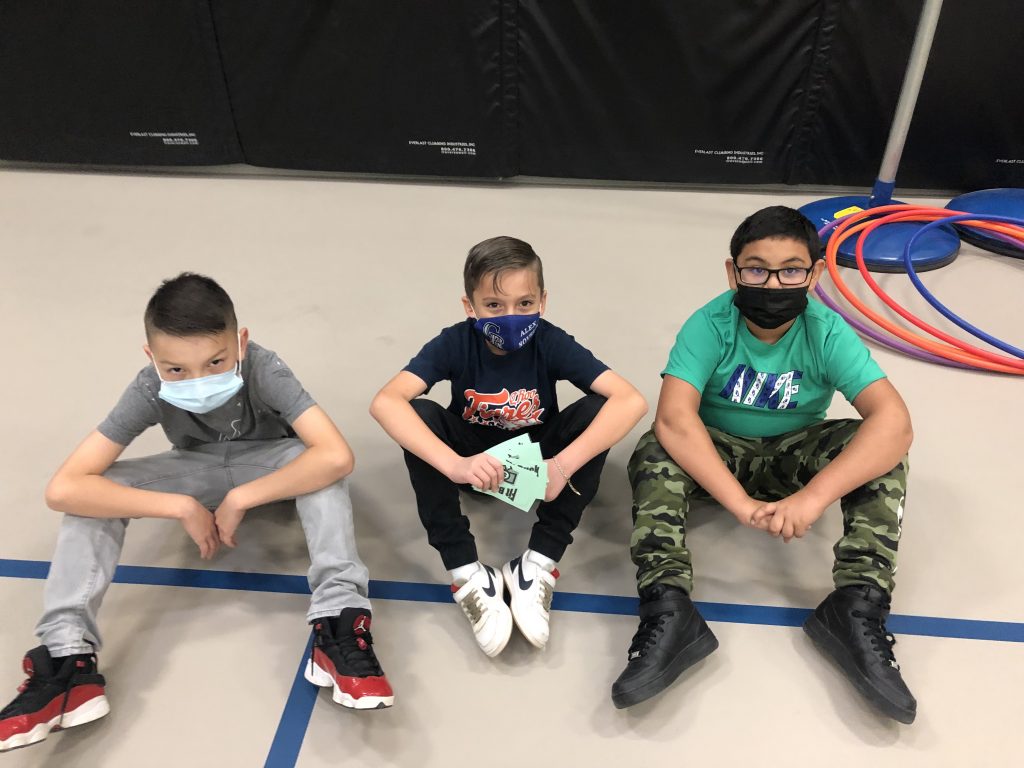Is there a skill practice that your students are not motivated to work hard and/or do the right thing? When first introducing long rope, my students would struggle. They just wanted to swing the rope as fast as possible, play tug of war with it; anything but help their partners be successful jumpers. Then I introduced the point system. If the turners can help the jumper get a certain number of jumps, the team goes to get a point. The points can be represented by any item you have a lot of. Make sure to use something tangible for students to go get, to be able to count, track and show. I often use poly spots, laminated fake money (like monopoly money), or hula hoops. The points have motivated students to be good rope turners for each other and have motivated them to stay on task with many other skill activities.
Differentiation:
The point system is a great way to differentiate tasks to meet the needs of all students. By individually adjusting what it takes to earn a point the teacher can help all students feel successful and challenge their skill ability. For example; when using a long jump rope, some students only needed 2 jumps in a row to earn one point while others; 5 jumps or more equaled a point.
Other skills or games that points can help with:
- Individual Jump Rope Skills
- The number of jumps can be modified for each student.
Teacher decides individually what number of jumps equals a point.
- The teacher modifies the point system for more challenging jump rope skills.
Ex: 5 points for doing the Criss Cross jump rope skill 5 times in a row.
- The number of jumps can be modified for each student.
- Long Jump Rope
- Teacher decides the number of jumps equals a point for your team.
- Students get a point for their team if they jump in or out of the turning rope.
- Self Catches
- The teacher chooses the number of catches to equal a point
- Partner Catches/Soccer Passes/ Hockey Passes
- Decide the number of catches/traps with your partner to equal a point. After a certain number of points, students can back up or change their throwing object.
- Hula Hoop Partner Catches: If a partner catches/traps a ball thrown from the line in a hula hoop, they bring the hula hoop over for a point.
- Catch It; keep It/Trap It/Keep It: One student stands in the hula hoop as the catcher/trapper, while the other student is outside the hula hoop as the thrower/passer. If the pair pass and catch (trap) it in their hula hoop, they keep it and become a point for the team.
- Target Throwing (both under and over hand)
- Spread poly spots all over the floor, with students standing on them. Students throw at various targets around the gym and if successful, they pick up the poly spot for a point to keep.
Recognizing Points
- When it’s time to clean up, have students tell (and show) you how many points they have.
- All students yell the number of points they scored when the teacher counts to “3”.
- Dismiss students by points. “Stay standing if you have 5, 8, 10 points or more.”
- Have students record their points.
- Use the points to set goals and record skill improvement.
- Use as a formative self-assessment so students can reflect on their effort and improvement.
Math modifications
Of course, the point system incorporates math skills into your program.
- Counting by different numbers (points are worth 2, 3, 4, 5, 10, 20, 25)
- Mystery color: At the end of the round announce the mystery color. If students have a red spot, they are worth 5 points. I try to pay attention to the students that aren’t getting as many points and make them feel more successful by making sure they have the mystery color.
Try using a point system the next time your students are practicing a skill. I hope you find that it motivates them to stay on task and work hard to improve their skill. Not only are they practicing a P.E. skill, but they are also practicing their math skills too!!!!








2 Responses
I love this idea! Using monopoly money for the older students and poly spots or beanbags for the younger students, thank you for sharing 🙂
Thank you for your response.
I also started to use speed stack cups for points. It has been fun because the students get to try to build the tallest tower at the end of the practice. They have really gotten into that challenge along with the skill practice.